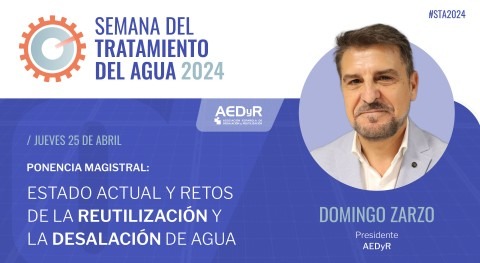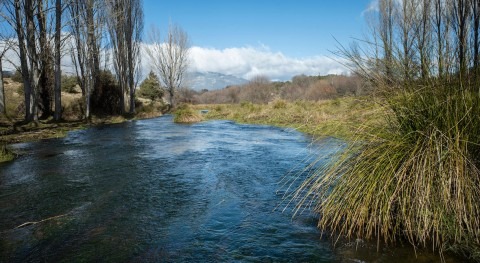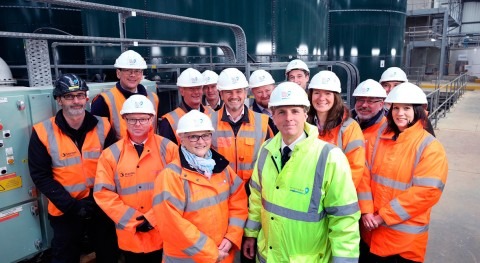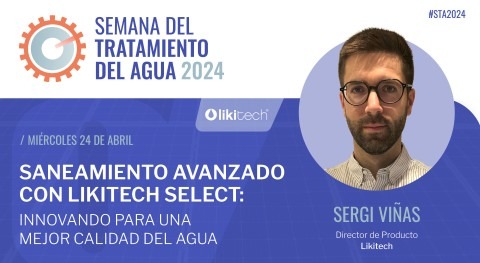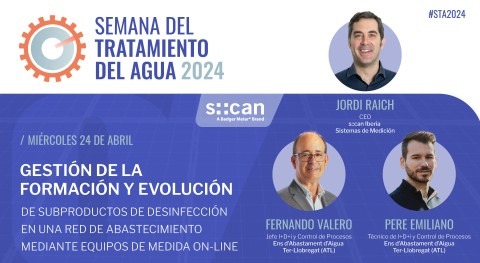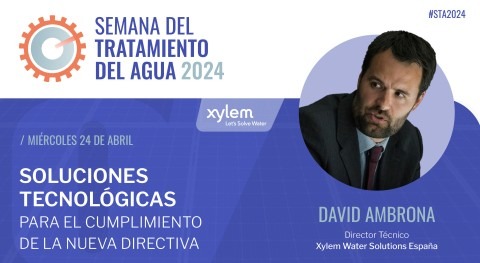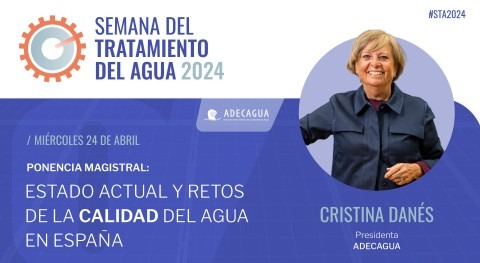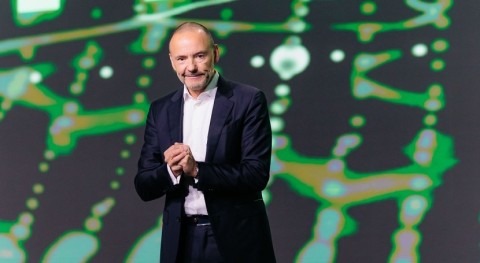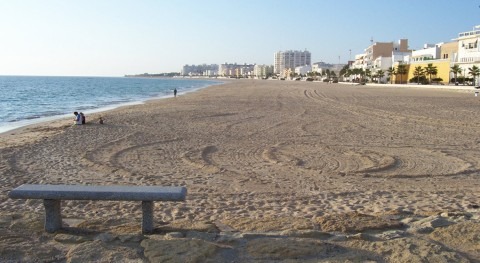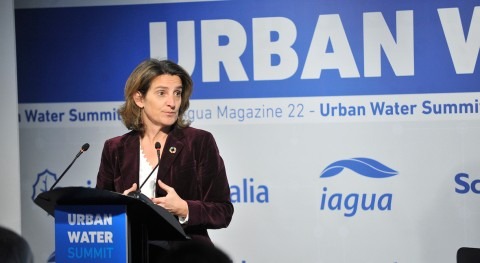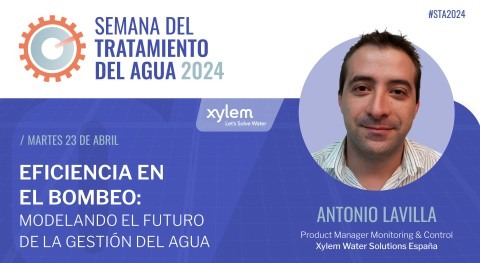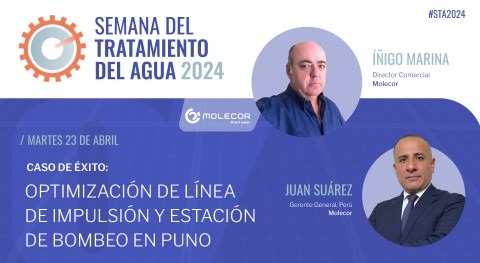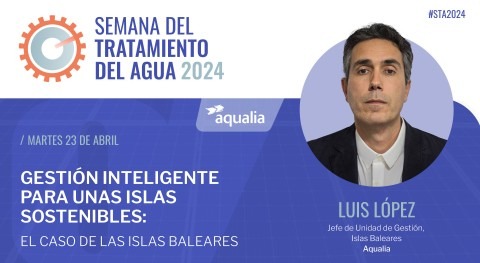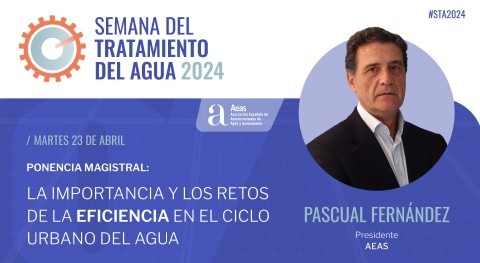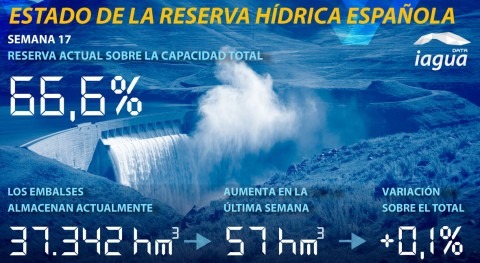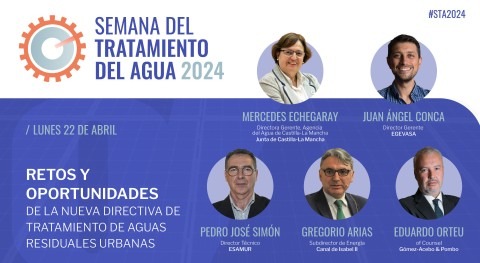 La Comisión Europea ha aprobado (hoy) la financiación de 183 nuevos proyectos al amparo del programa LIFE+, el fondo medioambiental de la Unión Europea. Los proyectos proceden de todos los Estados miembros de la UE e incluyen actuaciones en los ámbitos de la conservación de la naturaleza, el cambio climático, la tecnología limpia, la política ambiental y la información y la comunicación en materia de medio ambiente. En conjunto, representan una inversión total de 530 millones de euros, de los que 244 millones serán fondos de la UE.
La Comisión Europea ha aprobado (hoy) la financiación de 183 nuevos proyectos al amparo del programa LIFE+, el fondo medioambiental de la Unión Europea. Los proyectos proceden de todos los Estados miembros de la UE e incluyen actuaciones en los ámbitos de la conservación de la naturaleza, el cambio climático, la tecnología limpia, la política ambiental y la información y la comunicación en materia de medio ambiente. En conjunto, representan una inversión total de 530 millones de euros, de los que 244 millones serán fondos de la UE.
Janez Potočnik, Comisario de Medio Ambiente, ha declarado lo siguiente:
«El programa LIFE+ mantiene su apoyo financiero a proyectos de alta calidad e innovadores con alto valor añadido para la UE. Estos nuevos proyectos no solo contribuirán de manera importante a la conservación de la naturaleza y a la mejora del medio ambiente, incluida la lucha contra el cambio climático, sino que también contribuirán a dar a conocer mejor en toda Europa los principales desafíos en materia de medio ambiente a los que nos enfrentamos, como el de disociar el crecimiento del uso de los recursos».
La Comisión ha recibido 748 solicitudes en respuesta a su última convocatoria de propuestas, que terminó en septiembre de 2010. De esas propuestas, se han seleccionado 183 para su cofinanciación al amparo de los tres componentes del programa: LIFE+ Naturaleza y Biodiversidad, LIFE+ Política y Gobernanza Medioambiental y LIFE+ Información y Comunicación. En 55 de esos proyectos participan socios de más de un Estado miembro.
Los proyectos LIFE+ Naturaleza y Biodiversidad mejoran el estado de conservación de especies y hábitats amenazados. De las 203 propuestas recibidas, la Comisión ha seleccionado para financiación 64 proyectos de asociaciones de organismos de conservación, autoridades públicas y otras partes. Situados en 18 Estados miembros, representan una inversión total de 223 millones de euros, de los que aproximadamente 125 millones de euros serán fondos de la UE. La mayor parte de los proyectos (55) se refiere a la naturaleza y contribuyen a la aplicación de la Directiva de aves y/o de hábitats y al establecimiento de la red Natura 2000. Los otros nueve proyectos se refieren a la biodiversidad, una nueva categoría de proyectos LIFE+ para iniciativas piloto que abordan problemas de biodiversidad más amplios. El importe total que se invertirá en proyectos relacionados con la biodiversidad asciende a 18,3 millones de euros.
Los proyectos LIFE+ Política y Gobernanza Medioambiental son proyectos piloto que contribuyen al desarrollo de conceptos políticos, tecnologías, métodos e instrumentos innovadores. De las 399 propuestas recibidas, la Comisión ha seleccionado para financiación 104 proyectos de una amplia gama de organizaciones públicas y privadas. Los proyectos seleccionados, situados en 18 Estados miembros, representan una inversión total de 286 millones de euros, de los que aproximadamente 109 millones de euros serán fondos de la UE. Los proyectos centrados en los residuos y los recursos naturales se llevan la mayor parte de la financiación (unos 143 millones de euros para 51 proyectos).
La Comisión aportará más de 16 millones de euros a 14 proyectos centrados directamente en el cambio climático, con un presupuesto total de 40 millones de euros. Además, 12 proyectos relacionados con otros temas tendrán también una incidencia indirecta en las emisiones de gases de efecto invernadero. Esos distintos proyectos se señalan en el anexo del presente comunicado de prensa.
El agua constituye otro ámbito importante, en el que se han seleccionado nueve proyectos. Los 30 proyectos restantes se refieren a diferentes temas, entre los que se incluyen la atmósfera, los productos químicos, el medio ambiente y la salud, los bosques, la innovación, el ruido, la conservación del suelo, los planteamientos estratégicos y el medio ambiente urbano.
Los proyectos LIFE+ Información y Comunicación tienen por objeto poner de relieve las cuestiones medioambientales y divulgar información al respecto, así como organizar campañas de concienciación y formación sobre prevención de incendios forestales. De las 146 propuestas recibidas, la Comisión ha seleccionado para financiación 15 proyectos procedentes de un gran número de organizaciones del sector público y privado en los ámbitos de la naturaleza y el medio ambiente. Los temas abordados son, por ejemplo, la biodiversidad, el cambio climático, los residuos y el agua. Los proyectos se sitúan en siete Estados miembros y representan una inversión total de 20,4 millones de euros, de los que 10,1 millones de euros serán fondos de la UE. La Comisión se congratula del gran aumento de la financiación dedicada a proyectos LIFE+ Información y Comunicación. Siete de los quince proyectos se refieren a una mayor concienciación en materia de naturaleza y biodiversidad, mientras que ocho se centran en otros temas relacionados con el medio ambiente.
Proyectos financiados en España (29 projects, 85.8 million)
LIFE+ Environment Policy and Governance (22 projects – 40.8 million)
- WET-COMP (Asociación de Investigación de la Industria Textil): The WET-COMP project aims to exploit solid textile wastes and some specific paper and wooden packaging wastes by means of wetlaid technology. This technology will be applied to wastes from the textile and clothing industry to make non-woven textile structures suitable for uses as reinforcements in the composites industry. The project will try to obtain a global procedure, which can be applied to the different sub-sectors of the textile and clothing industry.
- EWsolutions4OLDhousing (Asociación para la Investigación y Desarrollo de los Recursos Naturales): This project aims to establish a standard methodology for the sustainable retrofitting of social housing. The project will identify new technologies, products and innovative building systems for the retrofitting of social housing and demonstrate the feasibility of their application when tailored to the physical, economic and social conditions of each building or type of housing. It will look at how existing building materials can be used in the construction of more sustainable housing.
- UNIDIGES (Centro Tecnológico Lurederra): The objective of the UNIDIGES project is to demonstrate the successful management of manure at the level of the individual livestock farm. It aims to develop a pilot demonstration plant based on the anaerobic digestion of manure from a single, medium-sized farm, achieving reduced pollution risks and a commercial end product. The new system will be tested on different farms and on several types of manure. The project will also develop and demonstrate a market for the digestate, for use as an agricultural fertiliser. Direct or indirect relevance to climate change.
- ECOGLAUCA ÉRGON (Ayuntamiento de Enguera): The ECOGLAUCA ÉRGON project aims to examine, demonstrate and evaluate the benefits of cultivating Nicotiana glauca on land that is currently abandoned. The project will seek to generate biomass and other commercial products, and demonstrate the plant’s contribution to fighting soil erosion and climate change. Direct or indirect relevance to climate change.
- MEDICOOL (Hermandad Farmaceútica del Mediterráneo, S.C.L.): The MEDICOOL project aims to develop and demonstrate an innovative solar technology solution for the heating and cooling of medicine storage warehouses in Spain. It will develop a prototype solar-based cooling system, which will be installed in a pharmaceutical storage centre and demonstrate that it is a technically feasible solution for reducing energy demand for cooling by more than 70%. The project will also seek to facilitate the transfer of the process to other areas. Direct or indirect relevance to climate change.
- REC-POLYOLEFIN (Fundación Lurederra): The main objective of the Rec-Polyolefin project is to design and develop a demonstration plant for the separation of mixtures of used polyolefin films. Using electrostatic and pneumatic techniques, the new plant will sort plastic that cannot currently be separated after waste collection. The project will treat 15 000 kg of used polyolefin mixtures, targeting a recovery rate of 10% to 55% of waste polyolefins, and a separation capacity of 1 000 kg/hour.
- AGROWASTE (Centro de Edafologia y Biología del Segura): The AGROWASTE project aims to design an integrated management system for fruit and vegetable wastes (FVW) for the Region of Murcia, Spain. It will promote environmentally friendly technologies that convert current FVW into resources for subsequent use. It will also adapt and demonstrate proposed technologies for delivering economically useful end products for specific waste types.
- HTWT (Consellería de Medio Ambiente, Agua, Urbanismo y Vivienda de la Comunidad Valenciana): The HTWT project aims to develop a comprehensive management plan for the collection and treatment of waste screens and displays. It will develop an industrial prototype for the treatment of LCD, LED, plasma displays and photovoltaic panels. The project will collect samples of the different kinds of screen and display and conduct detailed tests to find suitable treatment processes to deliver reusable materials and will identify new applications for the emerging products.
- Crops for better soil (Transati S.L): This project aims to demonstrate that the application of organic farming techniques can make cultivation of semi-arid land economically viable. The project therefore aims to demonstrate an alternative to current erosive farming practices and land abandonment in areas with vulnerable dry soil types by examining optimal combinations of methodologies (crop rotation; fertilisation with compost; and re-introduction of traditional crops) to achieve the best soil and crop quality results for specific soil and climate conditions.
- NITRATES (Gestión Ambiental, Viveros y Repoblaciones de Navarra S.A.): The NITRATES project aims to improve the knowledge of the impact of farming and cattle raising on nitrate contamination of waters and to define and promote best practices to reduce it. The project will look specifically at the effects of cattle raising activity and the nitrate inputs and outputs derived specifically from cattle waste management and examine the contamination of both surface waters and groundwater. It will then develop new simulation models for quantifying the contamination of groundwater by nitrates from farming sources.
- BREAD4PLA (Asociación de Investigación de Materiales Plásticos y Conexas): The main objective of the BREAD4PLA project is to demonstrate the technical and economic viability of using waste products from the bakery sector in the fabrication of a 100% biodegradable film. The project will establish and operate a continuous pilot plant at pre-industrial scale for the synthesis of Polylactic Acid (PLA) from bakery waste products.
- RECYSLURRY (Asociación de Investigacíon de Industrias de la Construcción): The main objective of the RECYSLURRY project is the development and demonstration of a pilot process for the recycling and valorisation of slurries produced during the industrial processing of natural stone products and turning them into usable material. It aims to overcome technical challenges in recycling this slurry and demonstrate the economic viability of the new process. Its target is to be able to successfully treat and reuse 50% of the slurries produced annually in the Novelda area.
- Agrolca-Manager (NEIKER - Instituto Vasco de Investigación y Desarrollo Agriario S.A.): The Agrolca-Manager project aims to support agro-food companies in the primary sector - and especially small and medium-sized enterprises - to minimise the environmental impact of their products’ life cycles. It aims to make the companies more sustainable through improved management of the main environmental impacts from their use of resources and from the generation of waste. It will do so by providing specialised software to enable agro-industrial companies to conduct lifecycle assessments (LCAs) in their sector.
- People CO2Cero (Ayuntamiento de Soria): The main objective of People CO2Cero is to strengthen the engagement of the local community in efforts to improve the environmental performance of the city of Soria. At the same time, it aims to link citizen mobilisation with economic objectives, creating approaches that facilitate the involvement of businesses and banks in the overall project of sustainable urban development and job creation.
- CO2ALGAEFIX (Ayuntamiento de Sevilla la Nueva): The key objective of the CO2ALGAEFIX project is to demonstrate, at a one hectare surface scale, an efficient way to capture CO2 from stationary sources – a power plant that uses natural gas. It hopes to show that the emissions can be used as a substrate for biomass algae production. The process will include specific novel technologies to capture and concentrate CO2, and especially to make use of the latter for developing cultures of microalgae. Direct or indirect relevance to climate change.
- EUTROMED (Diputación Provincial de Granada): The purpose of the Eutromed project is to develop and demonstrate a best practice method for the reduction of nitrogen levels in surface flow of agricultural lands in the Mediterranean climate zone. The project will install state-of-the-art buffer technology on a demonstration drainage area of 250 hectares in the basin of the Cubillas river, monitoring and documenting the effectiveness of different models of nitrogen filters.
- RECYTRACK (ACCIONA Infraestructuras S.A.): The overall objective of the Recytrack project is to demonstrate the successful use of an elastomeric material made of end-of-life tyres blended with resin in industrial applications within the railway industry. It will technically design products (i.e. isolated blocks and mats) that are used within the railway industry. The project will conduct a lifecycle assessment for the tyres. This will take into account the energy consumption and emissions associated with original production and the collection, transport, processing and use of the material at the end of its life as a tyre.
- NEW JERSEY (Dirección General de Carreteras): The aim of the New Jersey project is to demonstrate and validate a new generation of eco-friendly Jersey safety barriers made from recycled rubber from tyres, recycled plastics and concrete. It aims to show that these materials are not only more environmentally friendly, but show improved impact absorption performance in case of traffic accidents.
- POLYMIX (University of Cantabria): The aim of the POLYMIX project is to demonstrate new environmentally friendly asphalt mixes, using polymer wastes for modifying mixes. The project will work with several types of polymeric wastes: polyethylene; polystyrene; and polypropylene as well as end-of-life tyres and will create several asphalt mixes modified with recycled polymeric waste at laboratory scale. The project will select the most appropriate mixes for industrial use and design the up-scaling process.
- AQUAENVEC (Centro Tecnológico del Agua (CETAQUA)): The main objective of the project is to provide decision-making tools to optimise eco-efficiency in the urban water cycle, through environmental and economic lifecycle analysis (LCA). It thus seeks to provide for more sustainable management of the urban water cycle. The project will work to assess all the major environmental impacts of the lifecycle of urban water systems, including on: global warming; terrestrial and water toxicity; eutrophication; acidification; and depletion of resources.
- AQUATIK (Centro Tecnológico del Agua (CETAQUA)): The main objective of the AQUATIK project is to implement and test new methods and techniques for the monitoring of selected priority pollutants in water. It seeks to develop a new automated prototype to measure pollutants discharged in wastewater effluents and related spills in quasi-real time that can be used on a wide scale as a routine monitoring tool covering sampling, filtering, concentration and detection steps for operators, decision-makers, regulatory agencies and different stakeholders.
- URWASTECH (LEITAT): The overall objective of the URWASTECH project is the more efficient and sustainable treatment of the existing rest fraction from sorted urban solid wastes. It aims to integrate treatment of this fraction with wastewater management to create a highly innovative integrated pilot plant providing valorisation of urban waste.
LIFE+ Nature (3 projects – 37.7 million)
- HUMEDALES DE LA MANCHA (Consorcio Alto Guadiana): The project targets the recovery of the Mediterranean salt steppes, a priority habitat of the Habitats Directive, in the 27 La Mancha wetlands’ Natura 2000 network sites. The main actions will focus on the purchase of agricultural land surrounding the wetlands to halt their degradation and desiccation, and restore/ recover their hydrological properties. These actions will benefit numerous bird species included in Annex I of the Birds Directive.
- Iberlince (Consejería de Medio Ambiente. Junta de Andalucía.): This transnational project (Spain-Portugal) aims at restoring the historical distribution of the Iberian Lynx across areas of Spain (Andalusia, Castilla-La Mancha, Extremadura) and Portugal. The project will work to reinforce existing populations, and establish new populations in areas identified as appropriate.
- PRO-Izki (Diputación Foral de Álava): The PRO-Izki project’s overall objective is the long-term favourable conservation of the Pyranean oak forest and all the habitats and species of community and regional interest that depend on this ecosystem in Izki Natural Park.
LIFE+ Biodiversity (3 projects – 5.6 million)
- LAMPROPELTIS (Gestión y Planeamiento Territorial y Medioambiental, S.A.U.): The main aim of the LAMPROPELTIS project is to reduce the density and abundance of Californian kingsnakes on Gran Canaria so as to minimise the impact of this exotic species on native biodiversity. The project hopes to contribute to the eventual eradication of this invasive alien species from the island.
- SOIL-Montana (Neiker - Instituto Vasco De Investigación y Desarrollo Agrario, S.A.): The main objective of the SOIL-Montana project is to demonstrate the viability of an innovative methodology for the conservation of soil and vegetation biodiversity in mountain and bottom valley grazing areas, based on the application of an Agro-ecosystem Health Card.
- INVASEP (Dirección General del Medio Natural. Consejería de Industria, Energía y Medio Ambiente. Junta de Extremadura.): This project’s global objective is to halt the loss of biodiversity associated with invasive alien species on the Iberian peninsula and in particular in the Tagus and Guadiana river basin districts. Involving co-operation between Spain and Portugal, this is the first trans-boundary project launched in the EU to tackle invasive alien species.
LIFE+ Information and communication (1 project – 1.6 million)
- LANDLIFE (XARXA DE CUSTODIA DEL TERRITORI): The project aims to convey the value of land stewardship among biodiversity conservation stakeholders at European level (especially the Western Mediterranean Arch), and to encourage its use and application. That means making land stewardship an attractive mechanism for conservation bodies, landowners, and local and regional governments, linking with new opportunities for rural development, marketing of local products, boosting of ecotourism and other benefits.
Antecedentes
LIFE+ es el instrumento financiero europeo para el medio ambiente y dispone de un presupuesto total de 2 143 millones de euros para el período 2007-2013. La Comisión abre una convocatoria de proyectos LIFE+ cada año.
Información suplementaria
Resumen de todos los nuevos proyectos financiados al amparo de LIFE+, desglosados por países.
Información sobre los nuevos proyectos LIFE+ Naturaleza y Biodiversidad.
Información sobre los nuevos proyectos LIFE+ Política y Gobernanza Medioambiental.
Información sobre los nuevos proyectos LIFE+ Información y Comunicación.





































